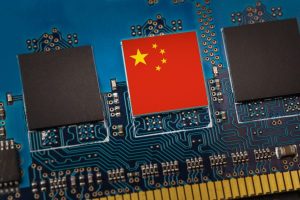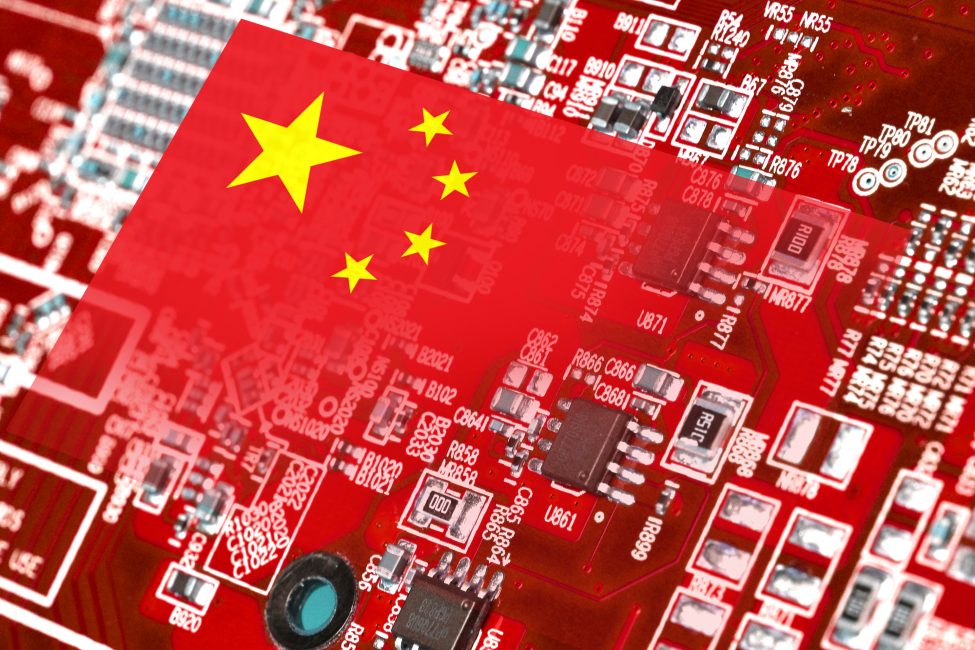Chinese Chip Gear’s Game-Changing Breakthrough Audience: Tech enthusiasts, tech industry professionals
Introduction
Hi, I’m Fred, a seasoned blog writer with a passion for technology and innovation. I have been following the developments in the semiconductor industry for over a decade, and I have witnessed the rise and fall of many chipmakers around the world. In this article, I will share with you a fascinating story of how China’s top chipmaker, SMIC, managed to achieve a game-changing breakthrough in its production technology, despite facing US sanctions and export controls. I will also explain the implications of this breakthrough for the global chip industry and the ongoing tech war between the US and China.
What is SMIC and Why is it Important?
SMIC, or Semiconductor Manufacturing International Corp., is China’s largest and most advanced chipmaker. It is also the world’s fifth-largest chip foundry, behind TSMC, Samsung, GlobalFoundries, and UMC. SMIC produces chips for a wide range of applications, such as smartphones, computers, servers, IoT devices, automotive, and AI.
SMIC is important for China’s ambition to become a global leader in the semiconductor industry, which is vital for its economic and national security. Semiconductors, or microchips, are the building blocks of modern electronics and technology, powering everything from smartphones to supercomputers. They are also essential for emerging fields like 5G, cloud computing, artificial intelligence, and quantum computing.
However, China currently relies heavily on foreign chipmakers, especially those based in the US, for its semiconductor supply. According to a report by the China Semiconductor Industry Association, China imported $350 billion worth of chips in 2020, accounting for 17.6% of its total imports. This makes China vulnerable to disruptions in the global chip supply chain, as well as to US sanctions and export controls that aim to limit its access to advanced chip technology.
Therefore, China has been investing heavily in developing its domestic chip industry, with the goal of achieving self-reliance and self-sufficiency by 2025. SMIC is at the forefront of this effort, as it is the only Chinese chipmaker that can produce chips using 14-nanometer technology, which is considered the mainstream node for high-performance chips.

How Did SMIC Achieve a Breakthrough in 7-Nanometer Technology?
In March 2021, SMIC announced that it had shipped Bitcoin-mining semiconductors built using 7-nanometer technology, which is well ahead of its established 14nm technology . This was a significant advancement for SMIC, as it demonstrated its ability to produce chips using a more advanced and efficient technology node, which can offer higher performance, lower power consumption, and smaller size.
The 7-nanometer technology is currently the most advanced node in mass production, used by leading chipmakers like TSMC and Samsung to produce chips for Apple, Qualcomm, Nvidia, and other top clients. SMIC’s breakthrough means that it has narrowed the gap with its global rivals and increased its competitiveness in the chip market.
What makes SMIC’s breakthrough even more remarkable is that it achieved it despite facing US sanctions and export controls that have barred the unlicensed sale to the Chinese firm of equipment that can be used to fabricate semiconductors of 10nm and beyond . The US has imposed these restrictions on SMIC since September 2020, citing national security concerns and accusing the Chinese firm of having ties with the Chinese military.
The US sanctions and export controls have severely hampered SMIC’s ability to acquire advanced chipmaking equipment, especially from Dutch company ASML, which is the sole supplier of extreme ultraviolet (EUV) lithography machines, a key tool for producing 7nm and smaller chips. Without access to EUV machines, SMIC has had to rely on older and less efficient equipment, such as deep ultraviolet (DUV) lithography machines, to produce its 7nm chips.
SMIC has also had to overcome other technical challenges, such as designing its own chip architecture, optimizing its manufacturing process, and testing its chip quality and performance. SMIC has reportedly collaborated with other Chinese firms, such as Huawei, Bitmain, and Innosilicon, to develop its 7nm chips. SMIC has also hired foreign talent and acquired foreign technology to boost its R&D capabilities.
What are the Implications of SMIC’s Breakthrough for the Global Chip Industry and the US-China Tech War?
SMIC’s breakthrough has several implications for the global chip industry and the US-China tech war. Here are some of the possible outcomes:
- SMIC’s breakthrough could boost the confidence and morale of China’s domestic chip industry, which has been struggling to catch up with the global leaders. SMIC’s success could inspire other Chinese chipmakers to pursue their own breakthroughs and innovations, creating a positive feedback loop for China’s chip development.
- SMIC’s breakthrough could also increase the demand and supply of 7nm chips in the global market, especially for Bitcoin-mining and other niche applications. SMIC could offer its 7nm chips at a lower price and with a shorter delivery time than its competitors, attracting more customers and increasing its market share.
- SMIC’s breakthrough could also pose a challenge and a threat to the US and its allies, who have been trying to curb China’s rise in the chip industry and maintain their technological edge. SMIC’s progress raises questions about how effective the US sanctions and export controls have been and whether Washington can indeed thwart Beijing’s ambition to foster a world-class chip industry at home.
- SMIC’s breakthrough could also trigger a response and a countermeasure from the US and its allies, who may seek to tighten their restrictions on SMIC and other Chinese chipmakers, or to support their own chip industry with more funding and incentives. The US may also try to persuade its allies to join its efforts to isolate and contain China’s chip industry, creating more tensions and conflicts in the global chip supply chain.
How Does SMIC Compare with Other Leading Chipmakers?
To better understand SMIC’s breakthrough and its position in the global chip industry, it is useful to compare it with other leading chipmakers, such as TSMC, Samsung, Intel, and AMD. Here is a comparative table that offers a visual representation of key features or benefits related to these chipmakers:
| Chipmaker | Technology Node | Market Share | Revenue | Clients |
|---|---|---|---|---|
| TSMC | 5nm, 7nm, 10nm, 12nm, 16nm, 22nm, 28nm, 40nm, 55nm, 65nm, 90nm, 130nm, 150nm, 180nm, 250nm | 54% | $45.5 billion | Apple, Qualcomm, Nvidia, AMD, MediaTek, Broadcom, Huawei, etc. |
| Samsung | 5nm, 7nm, 8nm, 10nm, 11nm, 14nm, 18nm, 28nm, 32nm, 36nm, 40nm, 45nm, 65nm, 90nm, 130nm, 180nm | 18% | $13.4 billion | Samsung, Qualcomm, Nvidia, IBM, AMD, Sony, etc. |
| Intel | 10nm, 14nm, 22nm, 32nm, 45nm, 65nm, 90nm | 15% | $19.8 billion | Intel, Apple, Microsoft, Dell, HP, Lenovo, etc. |
| AMD | 7nm, 12nm, 14nm, 28nm, 32nm, 40nm, 45nm, 65nm, 90nm | 1% | $3.2 billion | AMD, Sony, Microsoft, etc. |
| SMIC | 7nm, 14nm, 28nm, 40nm, 55nm, 65nm, 90nm, 130nm, 150nm, 180nm, 200nm, 350nm | 5% | $4.1 billion | Huawei, Qualcomm, Broadcom, MediaTek, HiSilicon, Bitmain, Innosilicon, etc. |
As you can see from the table, SMIC still lags behind its rivals in terms of technology node, market share, revenue, and clients. However, SMIC’s breakthrough in 7nm technology shows that it is catching up fast
How Can SMIC Sustain and Improve Its 7-Nanometer Technology?
While SMIC’s breakthrough in 7nm technology is impressive, it is not enough to secure its long-term success and competitiveness in the global chip industry. SMIC still faces many challenges and uncertainties, such as:
- The US sanctions and export controls may become stricter and more comprehensive, cutting off SMIC’s access to not only EUV machines, but also other critical equipment, materials, and software that are needed for chip production. The US may also pressure its allies and partners to follow its lead and stop doing business with SMIC and other Chinese chipmakers.
- The 7nm technology is not the end goal, but rather a stepping stone to more advanced and complex technology nodes, such as 5nm, 3nm, and beyond. SMIC will have to invest more in R&D, innovation, and talent acquisition to keep up with the rapid pace of technological change and to meet the increasing demands of its clients and the market.
- The 7nm technology is not a one-size-fits-all solution, but rather a diverse and customized portfolio of products and services that cater to different applications and specifications. SMIC will have to develop and optimize its 7nm technology for various domains, such as mobile, AI, cloud, automotive, and IoT, and to compete with other chipmakers who have more experience and expertise in these fields.
To overcome these challenges and uncertainties, SMIC will have to adopt a multi-pronged strategy that involves:
- Seeking alternative sources and suppliers of chipmaking equipment, materials, and software, such as from Europe, Japan, South Korea, or Taiwan. SMIC may also try to develop its own indigenous capabilities and solutions, or to collaborate with other Chinese firms and institutions, to reduce its dependence on foreign technologies.
- Expanding its production capacity and improving its operational efficiency, quality, and reliability. SMIC may also seek to diversify its geographic locations and markets, such as by building more fabs in mainland China, Hong Kong, or overseas, and by serving more clients from different regions and sectors.
- Enhancing its R&D and innovation capabilities and accelerating its technology roadmap. SMIC may also seek to acquire or license more advanced and proprietary technologies, such as from IBM, Intel, or AMD, or to form strategic partnerships and alliances with other chipmakers, such as TSMC, Samsung, or GlobalFoundries, to gain access to their technology and know-how.
Conclusion
In conclusion, SMIC’s breakthrough in 7nm technology is a remarkable achievement that showcases its resilience and determination to overcome the US sanctions and export controls and to advance its production technology. SMIC’s breakthrough also has significant implications for the global chip industry and the US-China tech war, as it challenges the status quo and the balance of power in the chip market. However, SMIC’s breakthrough is not a guarantee of its future success and competitiveness, as it still faces many challenges and uncertainties in sustaining and improving its 7nm technology. SMIC will have to adopt a multi-pronged strategy that involves seeking alternative sources and suppliers, expanding its production capacity and improving its operational efficiency, and enhancing its R&D and innovation capabilities and accelerating its technology roadmap.




